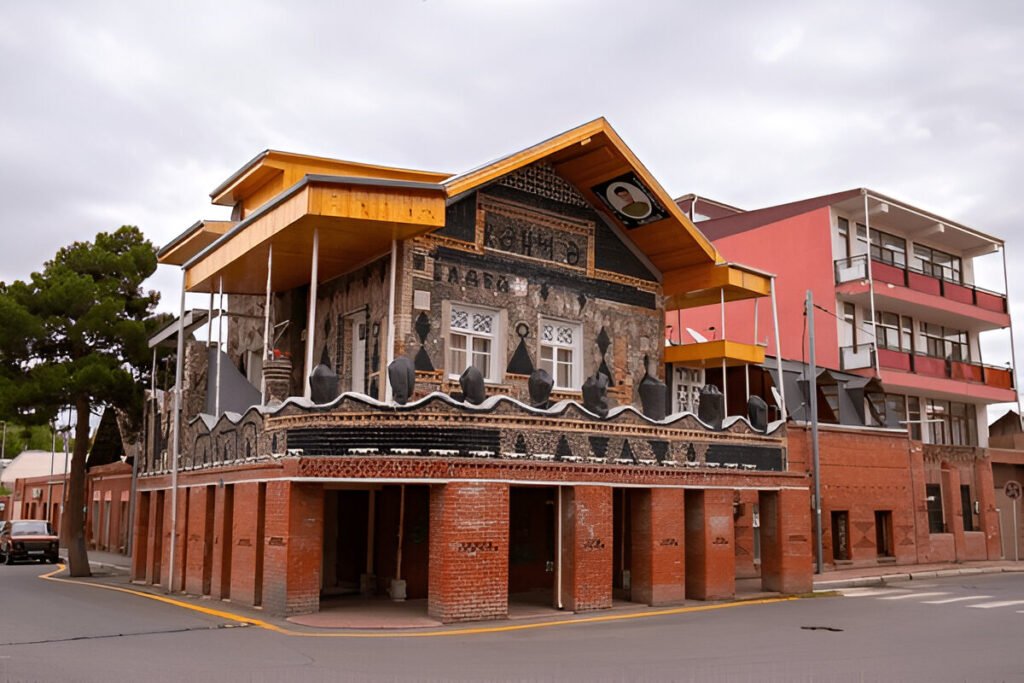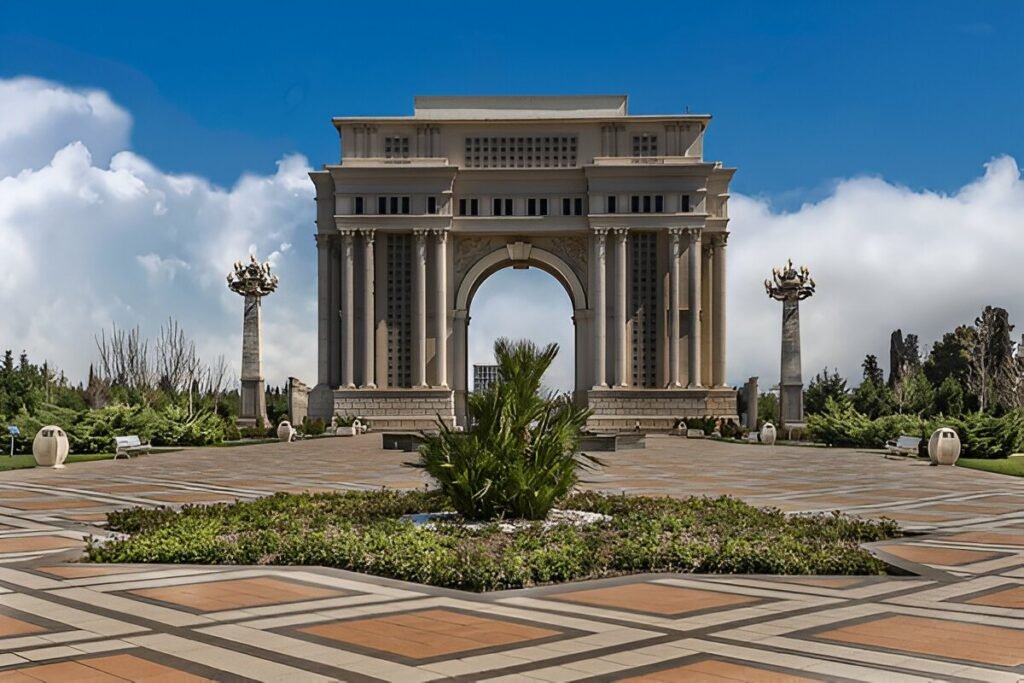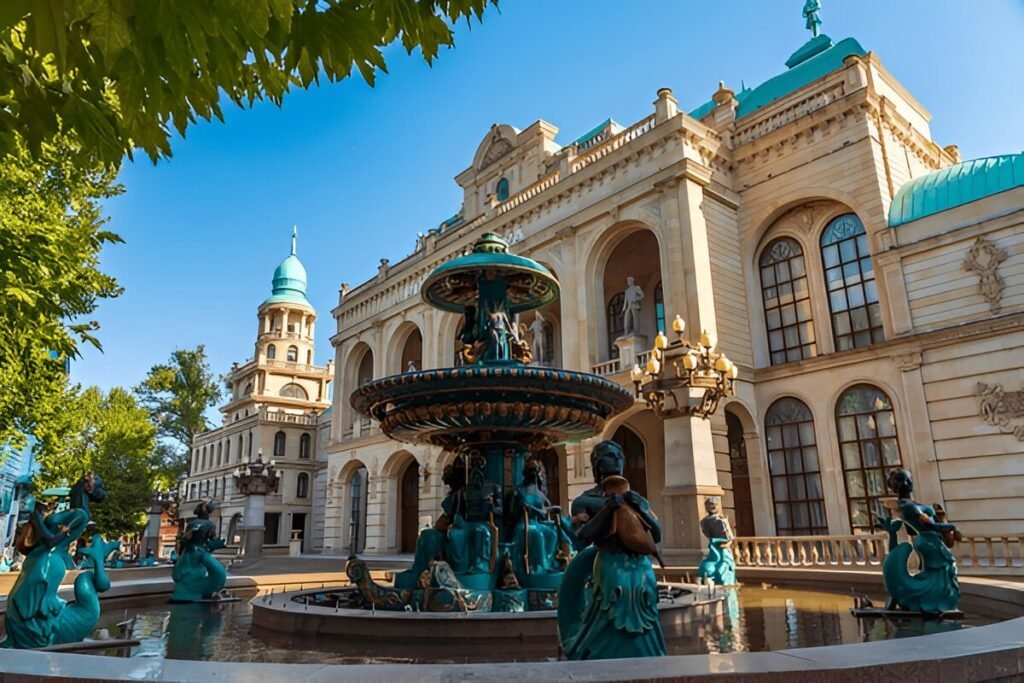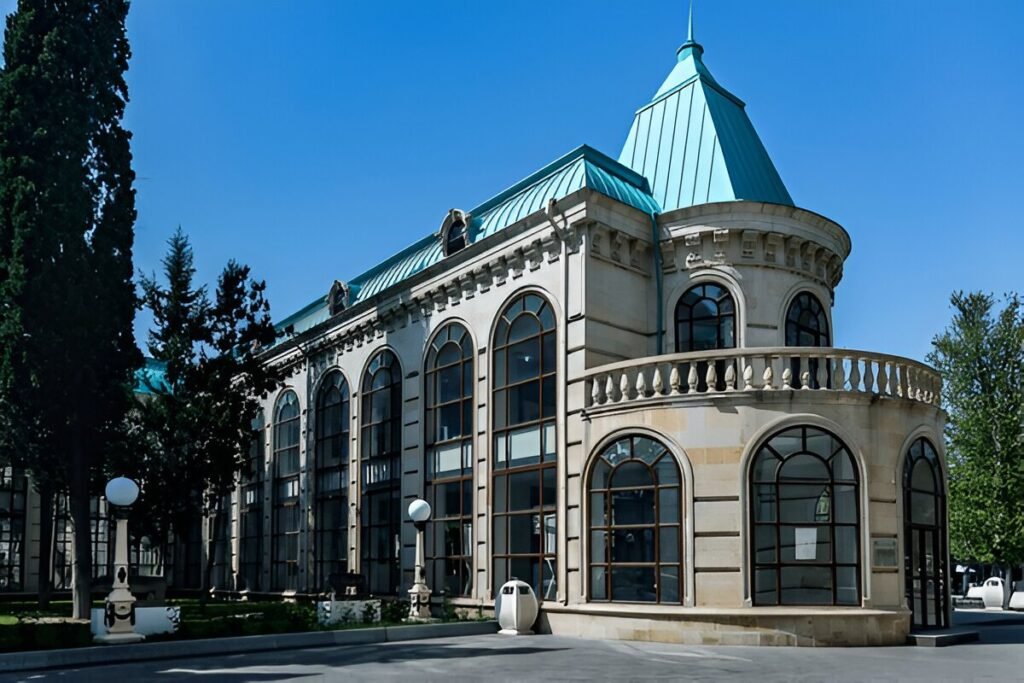Introduction
Located in the western part of Azerbaijan, Ganja is one of the oldest and most historically significant cities in the country. Rich in culture, history, and tradition, Ganja has been a center of intellectual thought, poetry, and artistry for centuries. From its founding in ancient times to its role in the Silk Road trade route, Ganja has played a vital role in shaping the cultural and intellectual landscape of Azerbaijan.
This article will explore the historic significance of Ganja, its cultural contributions, and the city’s unique charm, focusing on its poetic heritage, historical landmarks, and natural beauty that continue to captivate visitors from around the world.
A Journey Through History

Ganja, once known as Kukush, has a history that stretches back more than 2,500 years. Founded by the Albanians (ancient Caucasian Albanians, not to be confused with the modern-day Albanians of the Balkans), the city was an important stop on the Silk Road, connecting the East and West through trade and cultural exchange. Over the centuries, Ganja has been part of various empires, including the Persian Empire, the Arab Caliphate, and the Russian Empire, each leaving its mark on the city’s architecture, culture, and traditions.
During the Medieval period, Ganja flourished as a center of learning and culture. It became a key cultural hub of the Islamic world, attracting scholars, philosophers, poets, and artists. It was in this period that Ganja became known for its intellectual and artistic achievements, particularly in the fields of poetry, philosophy, and science.
Ganja has seen periods of both prosperity and devastation. The city was extensively damaged during the Russian-Persian Wars in the 18th century, but it rebuilt itself over the years, maintaining its cultural significance. Today, Ganja stands as the second-largest city in Azerbaijan and a testament to the resilience and heritage of the Azerbaijani people.
Ganja’s Poetic Legacy: The Land of Poets
One of the most remarkable aspects of Ganja is its deep connection to poetry and literary tradition. The city has been the birthplace and home of many notable poets and intellectuals who have contributed to Azerbaijan’s literary heritage. Nizami Ganjavi, perhaps the most famous poet in Azerbaijani history, was born in Ganja in the 12th century. Nizami’s epic poems, particularly his work Khamsa (The Quintet), have earned him recognition as one of the greatest poets of the Persian literary tradition and one of the finest poets in world literature.
Nizami’s influence is still felt today, as his works continue to be read and revered throughout the world. His poetry, which weaves themes of romance, mysticism, and philosophy, is still studied in schools and universities across Azerbaijan. Nizami is often considered the symbol of the golden age of Azerbaijani literature.
The Nizami Mausoleum in Ganja, which honors the poet, is one of the city’s most important historical sites. The mausoleum attracts visitors and scholars from around the world, who come to pay tribute to the legacy of this literary giant. The Nizami Museum of Azerbaijani Literature, also located in Ganja, further celebrates the life and work of Nizami, providing insight into the poet’s influence on Azerbaijan’s cultural and literary history.
Beyond Nizami, Ganja has been home to many other poets and intellectuals, making it a city with a rich literary history. Mirza Fatali Akhundov, an Azerbaijani philosopher and playwright, was another influential figure in the city’s intellectual tradition. His plays and works on Azerbaijani language and culture have left a lasting impact on Azerbaijani literature.
Historical Landmarks: Tracing Ganja’s Rich Past

Ganja is home to several historical landmarks that offer visitors a glimpse into the city’s rich past. From Islamic architecture to Soviet-era buildings, the city’s structures reflect the many different periods of its long history. Some of the most notable landmarks include:
1. Javad Khan Street and the Ganja Fortress
The Ganja Fortress, which dates back to the 18th century, is a prime example of the city’s historical significance. It was constructed during the reign of Javad Khan, the last Khan of Ganja, who led the city during its final years as part of the Khanate of Ganja before it was annexed by the Russian Empire. The fortress itself, though partially in ruins today, still provides visitors with insight into the military history of the region and offers a panoramic view of the city.
Javad Khan Street, named after the city’s historical ruler, is lined with architectural gems that represent a blend of Persian, Ottoman, and Russian influences. It’s a perfect place to stroll and explore the city’s charm.
2. The Juma Mosque
Built in the 16th century, the Juma Mosque is one of the most famous religious sites in Ganja. The mosque features stunning Islamic architecture, including intricate calligraphy and stunning tile work. It is an important symbol of Ganja’s Islamic heritage and is still used as a place of worship today.
3. Imamzadeh Mausoleum
Located just outside the city center, the Imamzadeh Mausoleum is another important religious site in Ganja. The mausoleum is the burial place of several prominent figures and is known for its beautiful blue-tiled architecture. It stands as a symbol of the spiritual life of Ganja.
4. Khan’s Palace
The Khan’s Palace in Ganja is another historical site that reflects the city’s role as the center of the Ganja Khanate. The palace, though largely destroyed, still offers glimpses of the grandeur and elegance that once characterized this royal residence. It remains a key historical site for visitors to explore the past.
Natural Beauty: Ganja’s Breathtaking Surroundings

While Ganja is often celebrated for its poetic heritage and historical landmarks, it is also known for its natural beauty. Located on the banks of the Ganja River, the city is surrounded by lush forests, rolling hills, and picturesque landscapes. The Ganja-Gazakh region is famous for its agricultural products, including pomegranates, grapes, and apricots.
One of the most notable natural sites near Ganja is Lake Goygol, located in the nearby Goygol National Park. This stunning lake, surrounded by snow-capped mountains, offers a peaceful retreat and a chance to enjoy Azerbaijan’s beautiful countryside. The National Park is home to various wildlife species, and visitors can enjoy hiking and exploring the park’s natural wonders.
Ganja Today: A Blend of the Old and the New
Today, Ganja is a dynamic and evolving city that combines its ancient heritage with modern development. While the city maintains its rich cultural traditions and celebrates its historical figures, it also embraces contemporary architecture, arts, and culture. Ganja has grown into a center of education, with universities and cultural institutions playing a major role in the city’s development.
The city also plays an important role in Azerbaijan’s economy, with its fertile lands contributing to the country’s agriculture and wine production industries. The Ganja Wine House, located just outside the city, offers visitors the chance to taste local wines produced in the region’s vineyards.
Conclusion:
Ganja stands as a testament to the rich cultural, poetic, and historical heritage of Azerbaijan. As the birthplace of Nizami Ganjavi, the city is a beacon of literary tradition and intellectual achievement. With its historic landmarks, beautiful natural surroundings, and vibrant cultural scene, Ganja remains an essential part of Azerbaijan’s identity.
Whether you are interested in history, literature, or simply exploring the beauty of the Azerbaijani countryside, Ganja offers something for every traveler. It’s a city where the past and present coexist harmoniously, offering a unique and enriching experience for those who seek to discover the heart and soul of Azerbaijan.












